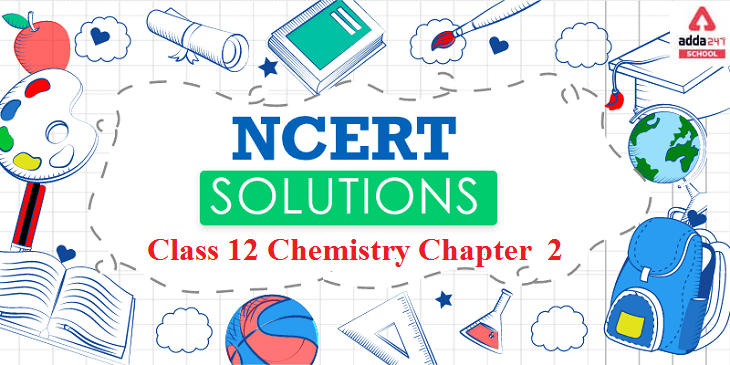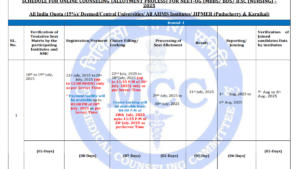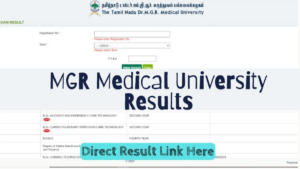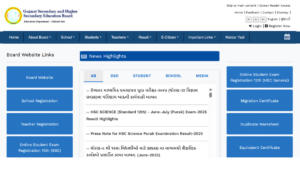Adda247 provides NCERT Solutions for Class 12 Chemistry Chapter 2. These solutions will not only help students to boost their board exams and score brilliant marks but also for competitive exams. The NCERT Solutions for Chemistry class 12 are according to the NCERT guidelines.
The Class 12 Chemistry chapters-wise solutions were provided for the benefit of students. The 12th class sets the base for higher education for every student. This makes it the most crucial class for any student who is aiming for his/her dream of quality education. Scoring good marks in the 12th class is equivalent to a quality high education. So, it becomes extremely important for students to give a boost to their class 12 Chemistry preparation with Adda247 NCERT solutions. The students can access the solutions anywhere while browsing the web easily. The solutions are very precise and accurate as these prepared by the adda247 experts.
NCERT Solutions for Class 12 Chemistry Chapter 2: Electrochemistry
Ncert Solutions for class 12 Chemistry Chapter 2 Electrochemistry is the branch of chemistry concerned with the interrelation of electrical and chemical changes that are caused by the passage of current. Electrochemistry is also vital in a wide range of important technological applications. For example, batteries are important not only in storing energy for mobile devices and vehicles but also for load leveling to enable the use of renewable energy conversion technologies.
Electrochemistry is the study of electricity and how it relates to chemical reactions. In electrochemistry, electricity can be generated by the movements of electrons from one element to another in a reaction known as redox or oxidation-reduction reaction.
Chapter 2 Chemistry class 12 NCERT Book solutions focus on Electrochemistry and its implications in the real world. Some of the topics covered here are electrochemical cells, galvanic cells, and electrolytic cells.
Important terms like resistivity, conductivity, and molar conductivity of the cell are explained briefly.
NCERT Solutions for Class 12 Chemistry Chapter 2: Key Features Electrochemistry
Some Key features of Ncert solutions for class 12 chemistry chapter 2 are given below.
- The NCERT Solutions provide clear and precise answers.
- These solutions help students to solve and revise the complete syllabus.
- The columns are used wherever necessary.
- Solutions are self–explanatory.
- Full of relevant diagrams.
NCERT Solutions Class 12 Chemistry Chapter 2: Important Questions
Que.-1 Arrange the following metals in order in which they displace each other from the solution of their salts.
Al, Cu, Fe, Mg and Zn.
Ans:
Mg, Al, Zn, Fe, Cu.
Que.-2 Given the standard electrode potentials.
K+/K = -2.93V, Ag+/Ag = 0.80V,
Mg2+/Mg = -2.37V, Hg2+/Hg = 0.79V,
Cr3+/Cr = -0.74V
Arrange these metals in their increasing order of reducing power.
Ans:
Metals with higher oxidation potential can easily be oxidized and have greater reducing power. Thus, increasing order of reducing power will be Ag<Hg<Cr<Mg<K.
Que.-3 In the button cells widely used in watches and other devices the following reaction takes place:
Zn(s) + Ag2O(s) + H2O(l) à Zn2+(ag) + 2Ag(s) + 2OH–(aq)
Determine G– and E– for the reaction.
Ans:
Zn is oxidised and Ag2O is reduced:
E–cell = E–Ag2O,Ag(reduction) – E–Zn/Zn*2+(oxidation)
= 0.344 + 0.76 = 1.104V
G = -nFEcell = -2 x 96500 x 1.104J
= -2.13 x 105J
Que.-4 Define conductivity and molar conductivity for the solution of an electrolyte. Discuss their variation with concentration.
Ans:
Conductivity (K): It is the conductance of unit cube of material.
SI unit is S/m. Common unit is S/cm.
The conductivity of an electrolytic solution always decreases with decrease in concentration that is on dilution. This is because with dilution, the degree of dissociation increases and the total no. of current carrying ions increases but the no. of ions per unit volume decreases.
Molar conductivity: It is the ratio of the electrolytic conductivity k to the molar concentration C of the dissolved electrolyte.
= k/C
The SI unit of molar conductivity is S m2/ mol
The common unit of molar conductivity is S cm2/ mol
The molar conductivity of strong and weak electrolytes increases with a dilution. This is b/c with dilution, the degree of dissociation increases and the no. of current carrying ions increases.
Que.-5 The conductivity of 0.20M solution of KCl at 298K is 0.0248 S cm-1. Calculate its molar conductivity.
Ans:
m = k x 1000 / molarity = 0.0248Scm-1 x 1000cm3L-1
0.20molL-1
= 124 S cm2 mol-1
Que.-6 How much charge is required for the following reductions:
- 1 mol of Al3+ to Al?
- 1 mol of Cu2+ to Cu?
- 1 mol of MnO–4 to Mn2+?
Ans:
i.) The electrode reaction is Al3+ + 3e– à Al
: Quantity of charge required for reduction of 1 mol of Al3+ = 3F = 3 x 95600C = 289500C.
ii.)The electrode reaction is Cu2+ + 2e– à Cu
: Quantity of charge required for the reduction of 1 mol of Cu2+ = 2F 2 x 95600C = 193000C.
iii.)The electrode reaction is MnO4– à Mn2+ I.e., Mn7+ + 5e– à Mn2+
: Quantity of charge required = 5F = 5 x 95600C = 482500C.
Que.-7 How much electricity in terms of Faraday is required to produce
- 0 g of Ca from molten CaCl2?
- 0 g of Al from molten Al2O3?
Ans:
i.) Ca+ + 2e– à Ca
Thus, 1 mole of Ca i.e., 40g of Ca require = 2F electricity
: 20 g of Ca require = 1 F of electricity
ii.)Al3+ + 3e– à Al
Thus, 1 mole of Al i.e., 27g of Al require = 3 F electricity
: 40g of Al require electricity
= 3/27 x 40 = 4.44F of electricity.
Que.-8 How much electricity is required in coulomb for the oxidation of :
- 1 mol of H2O to O2?
- 1 mol of FeO to Fe2O3?
Ans:
i.) The electrode reaction for 1 mole of H2O is
H2O à H2 + ½ O2
i.e., O2- à 1/2O2 + 2e–
: Quantity of electricity required
= 2F = 2 x 96500 C = 193000 C
ii.)The electrode reaction for 1 mole of FeO is
FeO + 1/2O2 à 1/2Fe2o3
i.e., Fe2+ à Fe3+ + e–
: Quantity of electricity required = 1F = 96500C.
Que.-9 A solution of Ni(NO3)2 is electrolysed b/w platinum electrodes using a current of 5 amperes for 20 minutes. What mass of Ni is deposited at the cathode?
Ans:
Quantity of electricity passed = (5A) X (20 x 60 sec) = 6000 C
Ni2+ + 2e– à Ni
Thus, 2F i.e., 2 x 96500 C of charge deposit = 1 mole of Ni = 58.7 g
: 6000 C of charge will deposit
= 58.7 x 6000/ 2 x 96500 C = 1.825g of Ni
Que.-10 Predict the products of electrolysis in each of the following:
- An aqueous solution of AgNO3 with silver electrodes.
- An aqueous solution of AgNO3 with platinum electrodes.
- A dilute solution of H2SO4 with platinum electrodes.
- An aqueous solution of CuCl2 with platinum electrodes.
Ans:
i.) AgNO3 (s) + aq à Ag+(aq) + NO3–(aq)
H2O à H+ + OH–
At cathode : Ag+ ions have lower discharge potential than H+ ions. Hence, Ag+ ions will be deposited as Ag in preference to H+ ions:
Ag+(aq) + e– à Ag(s)
At anode : As Ag anode is attacked by NO–3 ions, Ag of the anode will dissolve to form Ag+ ions in the solution.
Ag(s) à Ag+(aq) + e–
ii.)AgNO3 with platinum electrodes:
At cathode: Ag+ ions have lower discharge potential than H+ ions. Hence, Ag+ ions will be deposited as Ag in performance to H+ ions.
At anode: As anode is not attackable, out of OH– and NO3– ions, OH– ions have lower discharge potential. Hence OH– will be discharge in preference to NO3– ions, which than decompose to give out O2.
OH–(aq) à OH + e–
4OH à 2H2O(l) + O2(g)
iii.)H2SO4(aq) à 2H+(aq) + SO42-(aq)
H2O à H + OH–
At cathode: H+ + e– à H
H + H à H2(g)
At anode: OH– à OH +e–
4OH à 2H2O + O2(g)
Thus H2 gases liberated at the cathode and O2 gases at the anode.
iv.)CuCl2(s) + aq à Cu2+(aq) + 2Cl–(aq)
H2O à H + OH–
At cathode: Cu2+ ions will be reduced in preference to H+ ions and copper will be deposited at cathode.
Cu2+ + 2e– à Cu
At anode : Cl– ions will be discharged in preference to OH– ions which remains in solution.
Cl– à Cl + e-
Cl + Cl à Cl2(g)
Thus, Cu will be deposited on the cathode and Cl2 gas will be liberated at the anode.
| NCERT Solutions for Class 12 Chemistry Chapter-wise Free PDF Download |











 NEET UG 2025 Counselling Dates OUT! Chec...
NEET UG 2025 Counselling Dates OUT! Chec...
 Dr MGR Medical University Results 2025 R...
Dr MGR Medical University Results 2025 R...
 GSEB HSC Science Supply Result 2025 Down...
GSEB HSC Science Supply Result 2025 Down...

